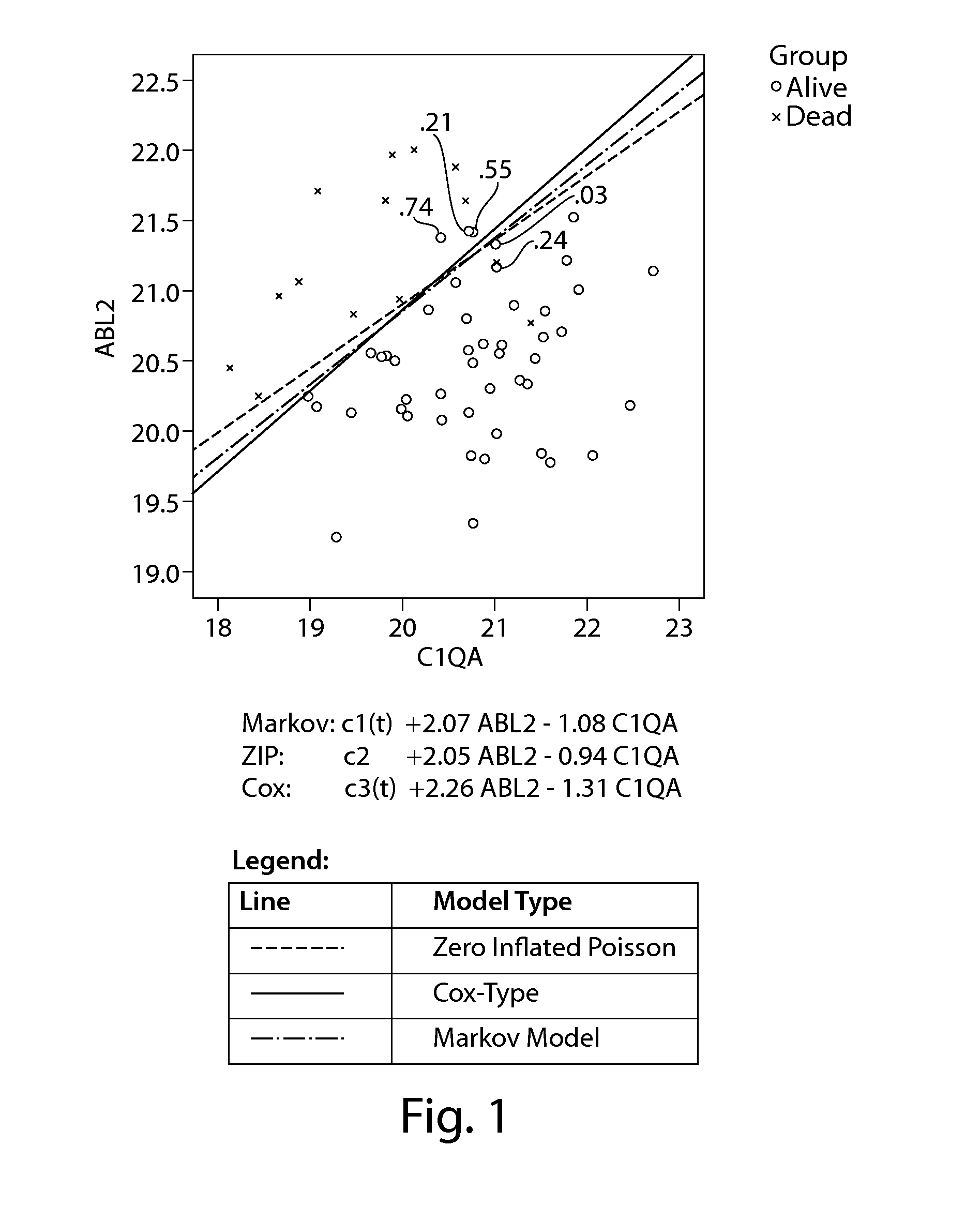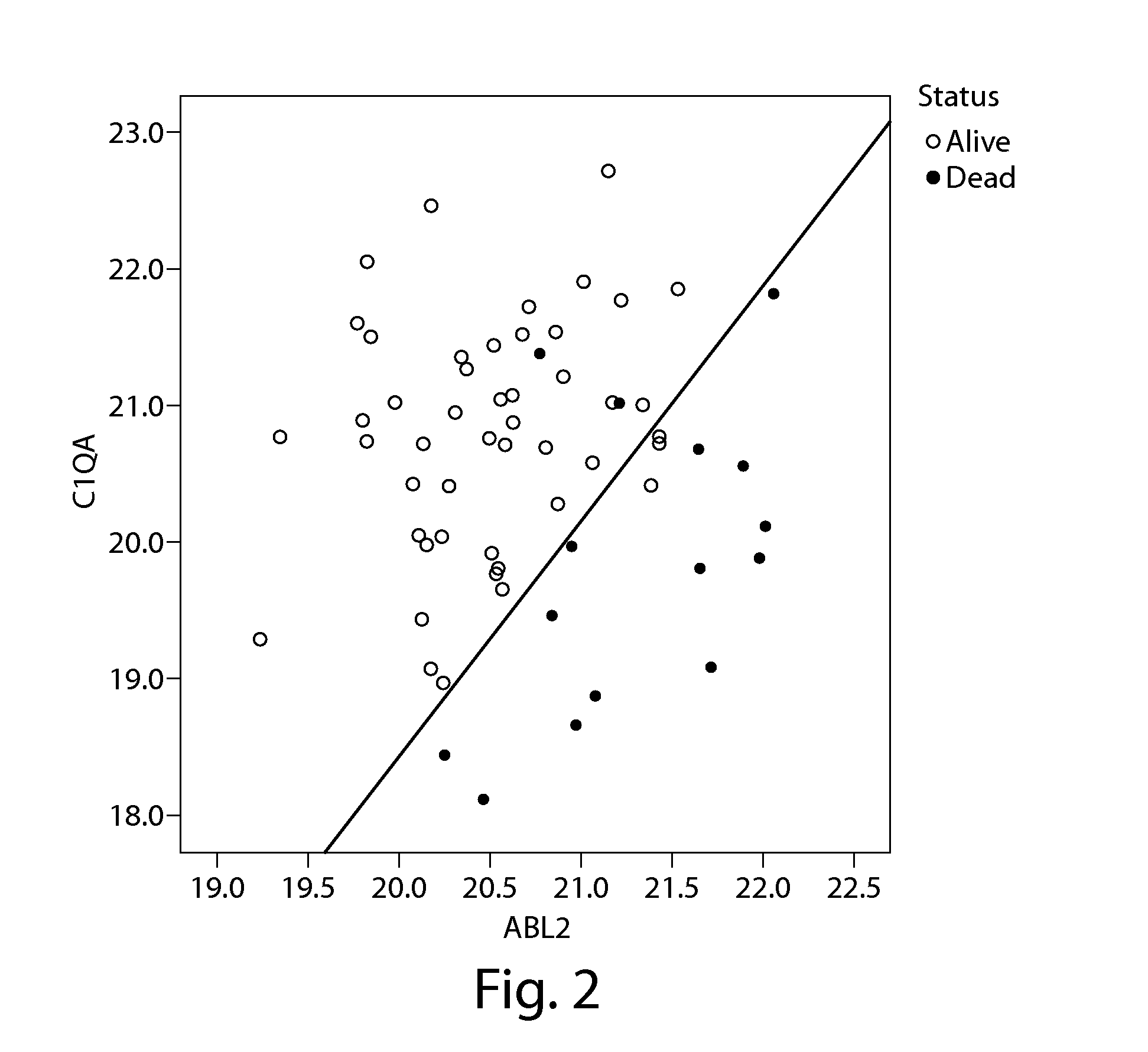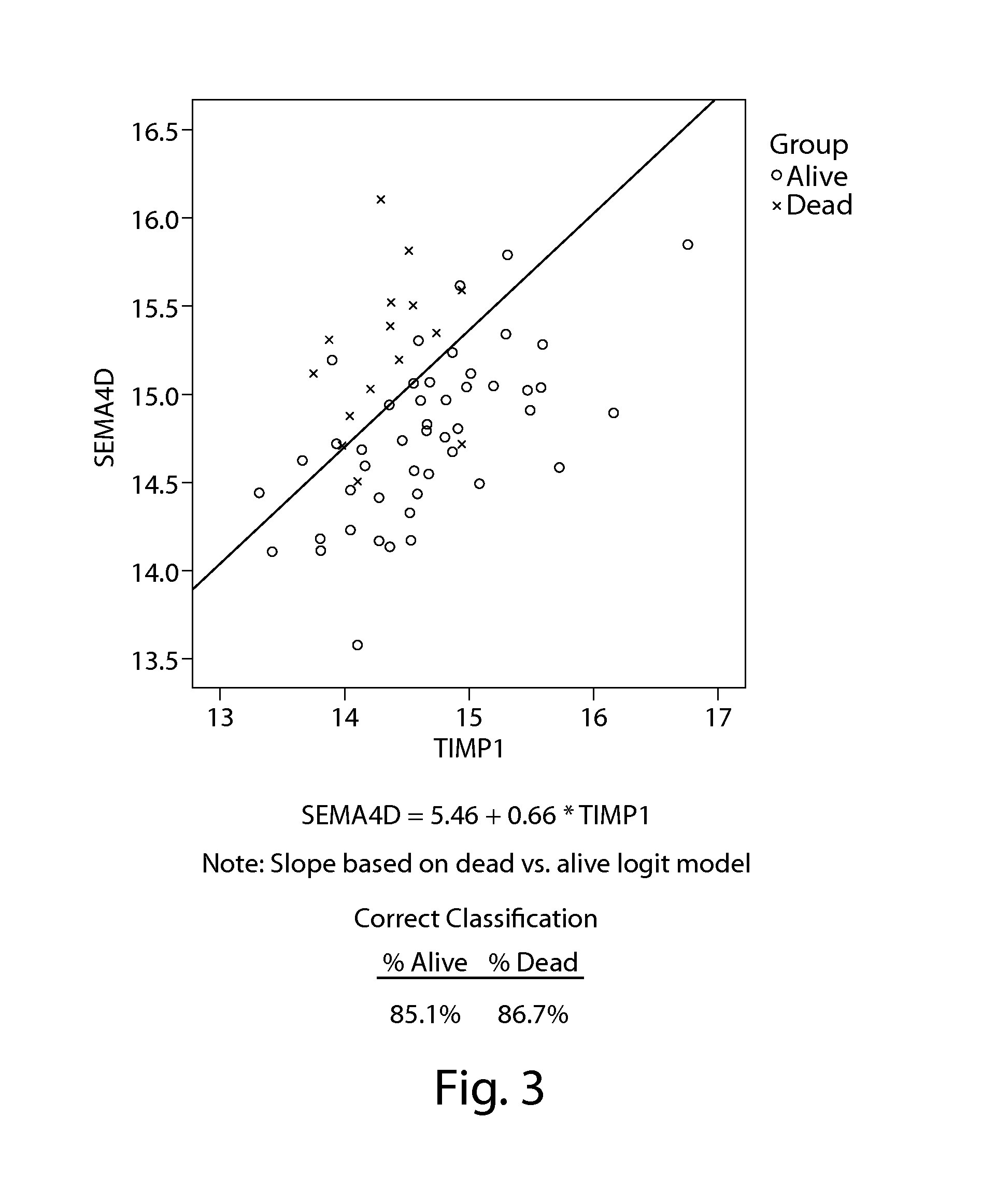Gene Expression Profiling for Predicting the Survivability of Prostate Cancer Subjects
a gene expression and prostate cancer technology, applied in the field of gene expression profiling for predicting the survivability of prostate cancer subjects, can solve the problems of increased urine, blood in urine, increased urination,
- Summary
- Abstract
- Description
- Claims
- Application Information
AI Technical Summary
Benefits of technology
Problems solved by technology
Method used
Image
Examples
example 1
Gene Expression Profiles for Predicting the Survivability of Hormone or Taxane Refractory Prostate Cancer Subjects
[0318]The following study was conducted to investigate whether any of the genes (i.e., RNA-based transcripts) shown in the Precision Profile™ for Prostate Cancer Survivablity (Table 1), individually or when paired with another gene, are predictive of primary endpoints of prostate cancer progression (i.e., survival time). The survivability (i.e., whether each subject was alive or dead) of 62 hormone or taxane refractory prostate cancer subjects (with or without bone metastases) was measured as of Jun. 20, 2008. A summary of any therapy each of the 62 subjects were receiving during the study period is shown in Table 2 (e.g., hormone therapy, radiotherapy, chemotherapy, other therapy, and / or a combination thereof). A summary of the date each patient became hormone or taxane refractory (i.e. classified as cohort 4), their survivability status (i.e., alive or dead) and surviv...
example 2
Re-Estimation of Cox-Type Model Using Weekly Periods
[0349]The Cox-Type model described in Example 1 was re-estimated using weekly periods (rather than quarterly periods, as used in Example 1). Re-estimation based on weekly periods resulted in lower (more significant) p-values as well as some other minor changes.
[0350]The Cox-Type model when estimated based on weekly periods yields 28 genes that are significant at the 0.05 level, as compared to only 20 genes that were significant at the 0.05 level when survival estimates were based on quarterly periods, as shown in Table 6. Again, ABL2 was the most significant when used to define a 1-gene model, but now it is more significant (p=8.1E-5 rather than p=0.0001). Also, as before, CAV2 is the 2nd most significant (p=7.9E-4). The order of the other genes was similar but somewhat different than that obtained with the quarterly period definition.
[0351]These calculations were repeated using time since the blood draw (“survival time Definition ...
example 3
Protein Expression Profiles for Predicting the Survivability of Hormone or Taxane Refractory Prostate Cancer Subjects
[0360]As indicated in Example 1, many of the top gene-models enumerated in Table 5 showed similar structure, i.e., patients with the highest risk of death had low expression of 1 gene relative to the other model gene (see Table 10). An analysis of the target gene mean differences (ΔΔCT difference) for the top 25 genes ranked by the Cox-Type model by p-value revealed survival rates that are associated with higher and lower gene expression, as shown in Table 19. Without intending to be bound by theory, such differentially expressed genes appear to reflect an increased “bias” of the immune system towards phagocytosis and inflammation as reflected by increased production and activation of tissue macrophages and a decrease in both cell-mediated and humoral immunity. Examples of such differentially expressed genes include ABL2, C1QA, CDKN1A, ITGAL, SEMA4D, and TIMP1. Surpri...
PUM
| Property | Measurement | Unit |
|---|---|---|
| Fraction | aaaaa | aaaaa |
| Fraction | aaaaa | aaaaa |
| Fraction | aaaaa | aaaaa |
Abstract
Description
Claims
Application Information
 Login to View More
Login to View More - Generate Ideas
- Intellectual Property
- Life Sciences
- Materials
- Tech Scout
- Unparalleled Data Quality
- Higher Quality Content
- 60% Fewer Hallucinations
Browse by: Latest US Patents, China's latest patents, Technical Efficacy Thesaurus, Application Domain, Technology Topic, Popular Technical Reports.
© 2025 PatSnap. All rights reserved.Legal|Privacy policy|Modern Slavery Act Transparency Statement|Sitemap|About US| Contact US: help@patsnap.com



